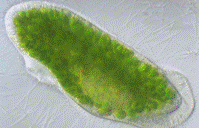Biological Sciences, School of

School of Biological Sciences: Faculty Publications
Document Type
Article
Date of this Version
2016
Citation
Published in Ecography 39 (2016), pp 223–239.
doi: 10.1111/ecog.01779
Abstract
Recent studies connecting the decline of large predators and consumers with the disintegration of ecosystems often overlook that this natural experiment already occurred. As recently as 14 ka, tens of millions of large-bodied mammals were widespread across the American continents. Within 1000 yr of the arrival of humans, ∼80% were extinct including all > 600 kg. While the cause of the late Pleistocene (LP) extinction remains contentious, largely overlooked are the ecological consequences of the loss of millions of large-bodied animals. Here, we examine the influence of the LP extinction on a local mammal community. Our study site is Hall’s Cave in the Great Plains of Texas, which has unparalleled fine-grained temporal resolution over the past 20 ka, allowing characterization of the community before and after the extinction. In step with continental patterns, this community lost 80% of large-bodied herbivores and 20% of apex predators at the LP extinction. Using tightly constrained temporal windows spanning full glacial to modern time periods and comprehensive faunal lists, we reconstruct mammal associations and body size distributions over time. We find changes in alpha and beta diversity, and in the statistical moments associated with periods of climate change as well as with the LP extinction event. Additionally, there is a fundamental change in the composition of herbivores, with grazers being replaced by frugivores/granivores starting about 15 ka; the only large-bodied grazer remaining today is the bison Bison bison. Moreover, the null model program PAIRS reveals interesting temporal patterns in the disassociation or co-occurrence of species through the terminal Pleistocene and Holocene. Extinct species formed more significant associations than modern ones, and formed more aggregated pairs than do modern species. Further, negative species associations were about three times stronger than positive.
Included in
Biology Commons, Environmental Monitoring Commons, Paleobiology Commons, Paleontology Commons


Comments
Copyright © 2015 by the authors. Ecography journal is © 2015 Nordic Society Oikos. Published by John Wiley. Used by permission.